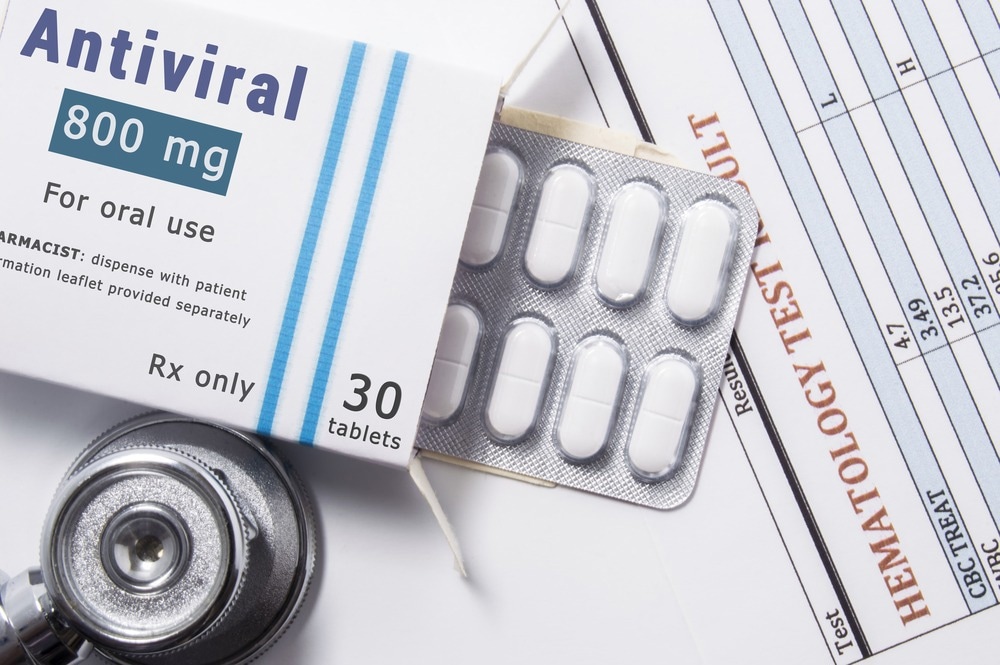
 *Important notice: bioRxiv publishes preliminary scientific reports that are not peer-reviewed and, therefore, should not be regarded as conclusive, guide clinical practice/health-related behavior, or treated as established information.
*Important notice: bioRxiv publishes preliminary scientific reports that are not peer-reviewed and, therefore, should not be regarded as conclusive, guide clinical practice/health-related behavior, or treated as established information.
In a recent study posted to the bioRxiv* preprint server, researchers in the Republic of Korea assessed the efficacy of antiviral medications against novel severe acute respiratory syndrome coronavirus 2 (SARS-CoV-2) Omicron subvariants.

Flow Cytometry eBook

Study: Evaluation of antiviral drugs against newly emerged SARS-CoV-2 Omicron subvariants. Image Credit: Shidlovski/Shutterstock.com
Background
The continual emergence of subvariants of SARS-CoV-2 Omicron and their swift global dissemination presents a major public health hazard. Between November 2022 and February 2023, several newly identified Omicron subvariants, namely BQ.1.1, BA.5.2, BF.7, BN.1.9, XBB.1, and XBB.1.5, gained widespread prevalence as global strains.
The Omicron subvariants have demonstrated resistance to multiple therapeutic antibodies. It is imperative to assess the efficacy of existing antiviral drugs, namely molnupiravir, nirmatrelvir, and remdesivir, which target conserved SARS-CoV-2 regions, in combating novel subvariants.
About the study
In the present study, researchers explored the effectiveness of antiviral drugs against SARS-CoV-2 Omicron subvariants. The team evaluated the antiviral effectiveness of various drugs against 23 novel Omicron subvariants and four previous SARS-CoV-2 variants of concern (VOCs) isolated from humans.
This was achieved by comparing the half maximal inhibitory concentration (IC50) foldchange ratio and the median IC50 value observed for the antiviral drugs against the SARS-CoV-2 reference strain (hCoV/Korea/KCDC03/2020).
To determine the IC50 of the tested drugs concerning genuine virus infection, a 0.1 multiplicity of infection (MOI) of each virus was administered to Vero E6 cells. The drugs were then subjected to a two-fold serial dilution process across seven concentrations and incubated for 48 hours. The study employed high-content imaging (HCI) analysis to evaluate the cell infectivity ratio observed between drug- and virus-only-treated cohorts.
This was achieved by quantifying the proportion of infected cells via immunofluorescence with viral N-specific antibodies and total cells. The determination of IC50 was based on the analysis of dose-response curves resulting from administering seven concentrations of all the drugs.
Results
Compared to the median IC50 values related to the reference strain for each drug, the study found the highest IC50-fold change values for remdesivir, nirmatrelvir, and molnupiravir against all SARS-CoV-2 VOCs were 1.9-fold, 1.4-fold, and 1.2-fold, respectively.
In addition, the median IC50-fold change values for remdesivir, nirmatrelvir, and molnupiravir concerning the Omicron variants were found to be 0.96-, 0.62-, and 0.4-fold, respectively. These values were comparable to the median IC50-fold change values of 1.02, 0.67, and 0.88, respectively, observed for the previous VOC.
The analysis of Global Initiative on Sharing Avian Influenza Data (GISAID) sequences revealed that nonstructural protein (Nsp)-12 of BA.2.75.2 and B.1.627.2 (Delta) exhibited amino acid substitutions of P323L and G671S, while Nsp-5 of BA.2.3 exhibited a P132H amino acid substitution.
Furthermore, the impact of prevalent changes such as P323L and G671S substitution in the Nsp 12 and P132H substitution in the Nsp 5 on nirmatrelvir antiviral activity was found to be negligible, as the drug binding location remained unaffected.
The 95% and 5% percentile ratios of the IC50 for these drugs on the reference strain were almost 2.7-fold for remdesivir, 1.5-fold for molnupiravir, and 1.9-fold for nirmatrelvir.
Conclusion
The study findings evaluated the antiviral efficacy of remdesivir, molnupiravir, and nirmatrelvir against the recently identified SARS-CoV-2 Omicron subvariants and verified their sustained activity. Furthermore, it has been observed that the antiviral efficacy of drugs remains unaffected by the mutations noted in Nsp-5 and Nsp-12 among the Omicron subvariants.
The findings offered a comprehensive analysis of the antiviral effectiveness of remdesivir, nirmatrelvir, and molnupiravir against different SARS-CoV-2 variants. The researchers believe these treatments could be consistently employed to manage SARS-Cov-2 infections.

 *Important notice: bioRxiv publishes preliminary scientific reports that are not peer-reviewed and, therefore, should not be regarded as conclusive, guide clinical practice/health-related behavior, or treated as established information.
*Important notice: bioRxiv publishes preliminary scientific reports that are not peer-reviewed and, therefore, should not be regarded as conclusive, guide clinical practice/health-related behavior, or treated as established information.
- Preliminary scientific report.
Cho, J. et al. (2023) "Evaluation of antiviral drugs against newly emerged SARS-CoV-2 Omicron subvariants". doi: 10.1101/2023.03.26.533897.https://www.biorxiv.org/content/10.1101/2023.03.26.533897v1
Posted in: Medical Science News | Medical Research News | Disease/Infection News
Tags: Amino Acid, Antibodies, Avian Influenza, Cell, Coronavirus, Coronavirus Disease COVID-19, Drugs, Efficacy, Imaging, Influenza, Omicron, Protein, Public Health, Remdesivir, Respiratory, SARS, SARS-CoV-2, Severe Acute Respiratory, Severe Acute Respiratory Syndrome, Syndrome, Virus

Written by
Bhavana Kunkalikar
Bhavana Kunkalikar is a medical writer based in Goa, India. Her academic background is in Pharmaceutical sciences and she holds a Bachelor's degree in Pharmacy. Her educational background allowed her to foster an interest in anatomical and physiological sciences. Her college project work based on ‘The manifestations and causes of sickle cell anemia’ formed the stepping stone to a life-long fascination with human pathophysiology.
Source: Read Full Article